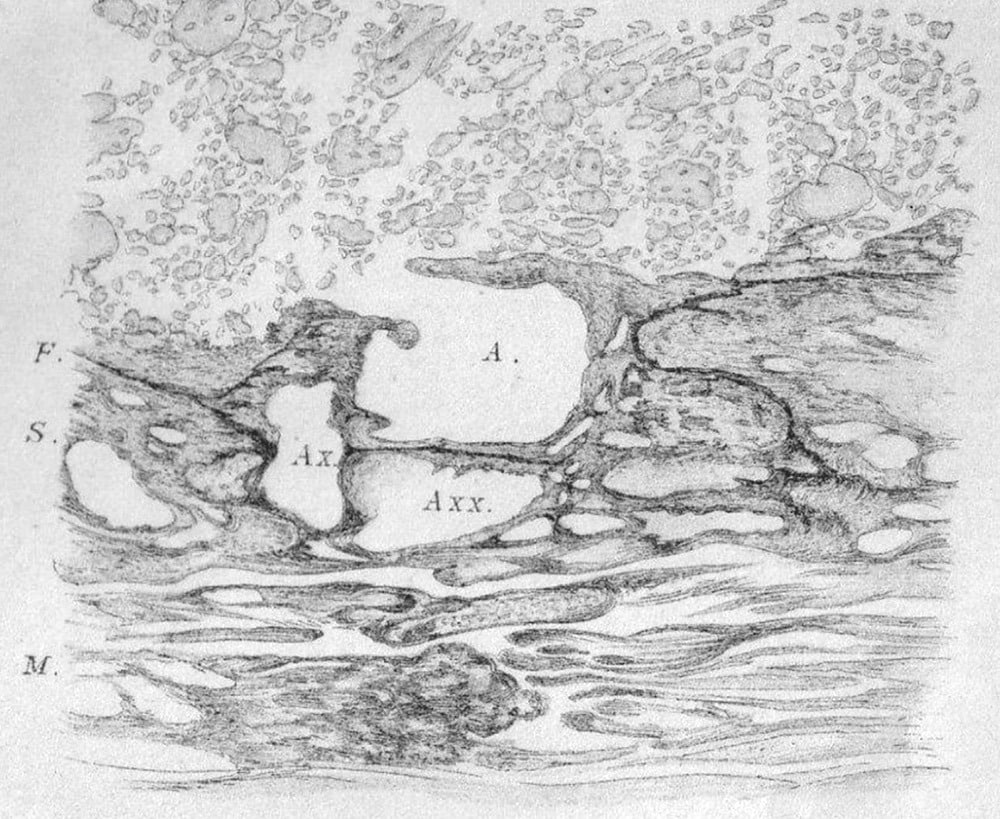Raissa Nitabuch
Raissa Semenovna Nitabuch [Раиса Семеновна Нитабух] (1859 – ) was a Russian physician and pathologist.
Raissa Nitabuch made astonishing observations with a simple monocular microscope on histological slices at the end of the 19th century, when the fatal teaching of “leaving” the uterus after the delivery was finally abandoned.
Nitabuch is best known for her description of the Nitabuch layer in 1887 publication. In this she was also the first to correctly describe the anatomy and physiology of maternal blood circulation in the human placenta.
Biography
- Born 1859 in Vladikavkaz, Russia
- 1881 – Travelled with a group of female students came from Russia to Switzerland to study medicine.
- 1885 – Graduated medicine, University of Zürich
- 1887 – Doctoral thesis ‘Kenntniss der menschlichen Placenta‘ in english – ‘Fundamentals of the structure of the human placenta” at the Institute of Anatomy, Bern under the mentorship of Theodor Langhans (1839-1915) a name well known to placentologists, since he first described the cytotrophoblast.
- It is not known when Nitabuch left Switzerland.
Medical Eponyms
Nitabuch layer [Слой Нитабух] (1887)
In her doctoral thesis, Nitabuch first described a necrotic, discontinuous layer of fibrin or fibrinoid material that is deposited forming a line of adherance between the invading trophoblast (cytotrophoblastic shell) and its contact with the boundary zone of maternal decidua; the region, after delivery of the baby the placenta detaches from the uterine wall. Until today, this layer is called the nitabuh shell/membrane and it is a boundary layer (utero-placental).
Nitabuch provided microscopic images of the human placenta, which revealed the presence of an epithelial lining separating fetal capillaries from maternal blood, which in later years have successively been interpreted as maternal endothelial, decidual and finally as ‘‘trophoblastic’.
This was also the first publication providing a detailed description of spiral arteries as the link between the intervillous space and the uterine vasculature. [aka *Nitabuch membrane; Nitabuch stria; Nitabuch-Fibrinstreifen]. Raisa Nitabuch suggested that the fibrin layer is the result of deposition of the inter villous space content and is the upper limit of maternal tissue. In her study she also noticed that villi reach up to only the upper layer of serotine until the fibrin strip and can even penetrate it, but never penetrate deeper.

F. fibrinous layer, S. serotina, M. muscularis of the uterus. Nitabuch 1887
Key Medical Contributions
Nitabuch provided convincing conclusions about the circulation of maternal blood in the intervillous space and its anatomical connection with the vascular system of the decidual membrane.
Ich will hier gleich vorwegnehmen, dass ich glaube, den Zusammenhang der intervillösen Räume mit Venen sowohl wie mit Arterien in unzweifelhafter Weise nachgewiesen zu haben.
I believe that I have undoubtedly proven the connection between the intervillous spaces with veins and arteries.
Major Publications
- Nitabuch R. Beiträge zur Kenntniss der menschlichen Placenta. [Features of the structure of the human placenta] 1887
Controversies
- Name: Raisse / Raissa, Раиса Семеновна Нитабух, Raisa Semyonovna Nitabukh
References
- Nitabuch (Frl.) Raisse / Raissa. Matrikeledition. University of Zürich
- Pijnenborg R, Vercruysse L. Shifting concepts of the fetal-maternal interface: a historical perspective. Placenta. 2008;29 Suppl A:S20-S25
- Moser RW. Raissa Nitabuch und die Nachgeburt. Der Gynäkologe, 2016; 49(6): 486–490
- Schneider H, Moser RW. Classics revisited. Raissa Nitabuch, on the uteroplacental circulation and the fibrinous membrane. Placenta. 2016;40:34-39.
- Orlov YV. Слой Нитабух – открытие прошлого через призму настоящего [Layer Nitabuh – the discovery of the past through the prism of the present.] 2017
- Khasanov AA, Orlov YV, Kuptsova AI. The Contribution of R Nitabuch to The World Obstetric Science. Open Acc J Repro & Sexual Disord 2(3)- 2019.
- Bibliography. Nitabuch, Raissa 1859- . WorldCat Identities
- Buttner R, Lee J. De-eponymising anatomical terminology. 2020
- Gross RE. Taking the ‘Shame Part’ Out of Female Anatomy. New York Times 2021
- Gross RE. Even the G-Spot is Named for a Man. New York Times 2021
Graduated from Southampton Medical School in 2017 with BMBS. Working in Sir Charles Gairdner Hospital Emergency Department in Perth, Australia.

